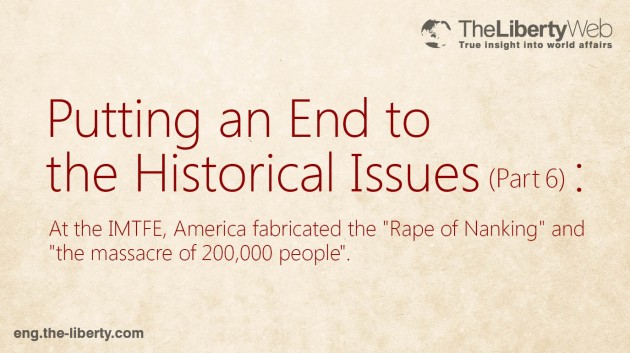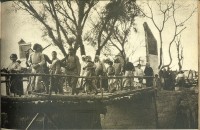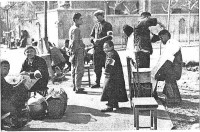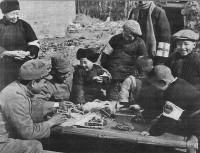Putting an End to the Historical Issues (Part 6):
At the IMTFE, America fabricated the "Rape of Nanking" and "the massacre of 200,000 people".
The “Rape of Nanking” has been the primary factor that has locked the Japanese into their masochistic view of history. The subject was first broached at the IMTFE, and the world was made aware of it again in the late 1990s by Iris Chang’s book “The Rape of Nanking”. However, it has become widely recognized that this “massacre” was “a fictitious one that America manufactured”. Let’s re-examine the issue.
On December 13th, 1937, the Japanese Army captured the Chinese city of Nanking. After that, the Americans claimed Japanese soldiers massacred more than 200,000 civilians and prisoners of war, and raped 20,000 women over the course of the next few weeks. This was the “Rape of Nanking”. However, that story was an American fiction concocted at the IMTFE. The IMFTE itself was “a ritual of vengeance” where the victorious nations acted as both prosecutors and judges regarding Japan’s policies.
1. Reverend Magee Witnessed Only One Murder
Just how was this massacre “created”?
First, IMTFE’s “massacre of 200,000 people” was based upon the number of corpses charitable organizations in Nanking were said to have buried. However, the charitable organization, which burnt the most bodies (112,000), stopped its activities when the Japanese attacked Nanking because the involved people fled. To begin with, it was an organization to care for children, and it did not have the personnel, tools, or expertise to bury vast numbers of corpses.
Kenichi Ara, the modern historian who ascertained this fact pointed out, ” In 1946, the Republic of China created the fictitious burial figures. The defense argued this point at the trials then. However, the judge accepted it as proof even though there was nothing to substantiate it”.
There was other “testimony” which was considered to underpin the massacre. Testimony alone has not normally been considered enough proof to judge a defendant in a trial, but it was enough at the IMTFE, which was convened to cast the Japanese as villains.
At that time, an American missionary in Nanking named Reverend Magee appeared in court to report on the supposed countless murders and rapes that were blamed on the the Japanese troops. However, investigators asked, “How many murders did you actually witness?” and he replied, “Only one”. As for the rapes, he saw only one case of a Japanese soldier with a Chinese woman, and most of his evidence was hearsay.
2. One Month Later, the Population Increased by 50,000.
In fact, during the occupation of Nanking, Japanese rule restored public order; money-exchange shops opened a few days later and three weeks later electricity and water supplies came back. One month later, there were between 50,000 and 200,000 more people living in Nanking than before its surrender.
Since most of the Chinese soldiers discarded their uniforms to mix with the ordinary citizens and to continue the battle as plain-clothes soldiers (*), the Japanese troops had a hard time mopping up. The IMTFE and “The Rape of Nanking” condemned this mopping up of plain-clothes soldiers as “the massacre of civilians”, but the actions of the Japanese Army naturally did not violate any international laws.
To begin with, neither Chiang Kai-shek nor the League of Nations presented any criticism for the “mass killings” at the time.
(*) “Ordinary clothes” was the Chinese term for “plain clothes”. “Plain-clothes soldiers” referred to Chinese soldiers who wore ordinary clothes and acted like civilians while they fought as guerillas. The Laws of War, under civilians entangled in conflict, forbade this form of warfare.
3. 20,000 Women Were Raped And No Evidence of Abortions or Births?
After the “massacre”, the next point of contention was “the rape of around 20,000 women”. At the IMTFE, this claim was based upon a report submitted in January of 1937 to a German consul in Shanghai by a German named John Rabe who was in Nanking at the time. The report claimed that “the Japanese Army raped around 20,000 women and girls, and massacred thousands of innocent citizens” and, just as previously mentioned in the burial records, these figures were accepted without any substantiation.
Meanwhile, an American physician named Robert Wilson testified before the tribunal about the alleged rape of a 15 year-old girl, but this was the only testimony from a handful of physicians who were in Nanking when it fell. In addition, one could not clearly establish that a Japanese soldier raped her.
The aforementioned historian Kenichi Ara pointed out that “20,000 cases in less than one month would work out to as many as 700 daily rapes, and that number wouldn’t have been a possibility unless Japanese soldiers had raped five or six people every day”.
Furthermore, after the fall of Berlin in May of 1945 and the Soviet rape of 100,000 German women, a large number of abortions and births were reported. If the same ratio were applied to the Nanking case, it’s estimated that 200 children of mixed blood would have been born. However, there were no records of large numbers of births or abortions in Nanking in October of that following year.
4. The Westerners in Nanking Were Pro-Chinese and Anti-Japanese.
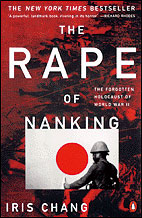
Chinese-American Iris Chang’s “The Rape of Nanking”, which she published in the U.S.A. in 1997, cited Japanese Army atrocities and asserted that “the Rape of Nanking happened” but, like the IMTFE, it was all testimony by anti-Japanese witnesses and there was no proof presented for their claims. Many Japanese experts have declared this book “outrageous”. Iris Chang committed suicide in 2004.)
“Mass killings” became established fact due to the testimony of Westerners who were in Nanking. Most of them were “pro-Chinese and anti-Japanese”, and their attitudes influenced their actions.
Miner Bates, an American missionary who taught at the University of Nanking, testified at the IMTFE that “12,000 boys and girls were killed, and there were 8,000 cases of rape”, but he served as an advisor to the Republic of China and even Chiang Kai-shek had decorated him.
A group of 15 missionaries in Nanking formed the International Committee for the Nanking Safety Zone with Bates as one of its leaders. On the pretext of protecting civilians, it was set up as a “safety zone”, and ostensibly excluded soldiers from both the Chinese and Japanese armies. However, the members of this committee violated international law and gave shelter to armed Chinese soldiers who entered their established safety zone.
The Chinese reported case after case of murder, rape, and pillage by Japanese soldiers to the committee, who kept recording such hearsay without any proof. More than half of the committee members were Americans who were hostile towards Japan. It would seem only natural to say that the committee was “pro-Chinese and anti-Japanese”.
Furthermore, the Australian Harold Timperley, a correspondent for the British newspaper the Manchester Guardian, described the breakdown of military discipline six months after the fall of Nanking in “Japanese Army Outrages Witnessed by a Foreigner”, but he did not go to Nanking and it was all written based on hearsay. Moreover, the Chinese government employed him to write anti-Japanese propaganda.
5. The Fake Photo in “The Rape of Nanking”
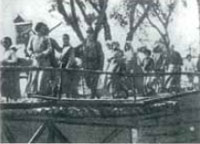
(Photo 1) “The Rape of Nanking” featured this photograph. “The Japanese Army rounded up thousands of women as it moved through China. Most of these women were gang-raped or were forced to work in military brothels” was the given explanation. It was blurred and people’s expressions could not be seen, but in fact, this photograph was carried in a Japanese magazine during the war with completely different published details.
(Photo 2) The weekly pictorial magazine Asahi Graph featured this photograph on November 10th, 1937. “Protected by our soldiers, a group of women and children from the Hinomaru Corps return to their village from working in the fields (Photographed by our correspondent Kumazaki on October 14th)” was written. The child on the left and the soldier were smiling. Their teeth were gleaming white, and the photo conveyed a gentle atmosphere.)
A Chinese-American named Iris Chang published “The Rape of Nanking” in December 1997 in the U.S.A., and the book became a best seller. Even today, American intelligentsia, such as university professors and historians, employ it as recommended reading and a resource for academic papers.
It was not only based upon unsubstantiated testimony and figures produced at the IMTFE, but also further boosted those figures to “around 300,000 civilians massacred” and “between 20,000 and 80,000 women raped” without having produced any basis for those increases.
Here we will take a closer look at the photo printed in the book as “proof of the Rape of Nanking”.
First, Photo 1 was described in the book as follows, “The Japanese Army rounded up thousands of women as it moved through China. Most of these women were gang-raped or were forced to work in military brothels.” It was the explanation given. Yet, in the November 10th, 1937 issue of Asahi Graph, the following description was originally given for the same photo series. “Protected by our soldiers, a group of women and children from the Hinomaru Corps return to their village from working in the fields (Photographed by our correspondent Kumazaki on October 14th).”
Regarding this issue, “The Research of ‘The Rape of Nanking'”, a rebuttal for Chang’s book, noted:
“You will notice that the photograph in Chang’s book was blurred. (…) This blurring was not the result of unskilled photographic techniques and could only be seen as intentional. (…) The expressions on people’s faces cannot be made out due to the blurring. The gentle atmosphere of the photograph has been erased by this.”
The rebuttal also pointed out that “The Rape of Nanking” explained the photograph of “the drifting corpses of those who died in battle” as “the corpses of massacred civilians on the banks of the Yantze River”. The book introduced unrelated, tragic photographs that claimed to portray Japanese soldiers and Nanking. They validated the great amount of Chinese propaganda found in the publication. In fact, there were a number of photographs in contemporary Japanese newspapers and magazines that showed how Japanese soldiers and Chinese civilians amicably interacted (Photos 3 and 4).
The Kono and Murayama Statements Were Based on Unsubstantiated Rumors
(Photo 3) A street scene inside Nanking Castle, photographed on December 17th, 1937. Four days after Japanese troops entered the castle, the Chinese populace had already returned to the routines of daily life, with a man having his hair cut and a child smiling (“Asahi Graph”. Published by the Asahi Shimbun, January 12th, 1938.)
(Photo 4) On December 20th, 1937 in Nakayamaji in Nanking Castle, Japanese soldiers and Chinese children were playing with toy tanks (“The Complete Collection of Photographs from the Second Sino-Japanese War (China)”. Published by the Asahi Shimbun, 1938).
Domestic anti-Japanese forces and countries such as Korea and America manufactured the stories behind the “Comfort women” and the “Rape of Nanking”. There can be no doubt that the Kono and Murayama statements, which accepted these fabrications uncritically and apologized for them, “have transformed rumors that were not based on historical facts into official views”.
As a result, they have forced “a deep sense of guilt” upon the spirits of the war dead, and “a baseless, masochistic view of history” upon the people of Japan after the Second World War. This erroneous view of history has caused tremendous damage to Japan’s diplomacy, national defense, and the economy. Japanese leadership should retroactively invalidate the Kono and Murayama statements.
At the IMTFE, America fabricated the “Rape of Nanking” and “the massacre of 200,000 people”.
– The burial count was based on corpses, which was a figure the Republic of China invented in 1946.
– Only Reverend Magee witnessed one murder according to testimony. Hearsay and propaganda produced the “massacre”.
– At the time, there was no censure from Chiang Kai-shek or the League of Nations. After Nanking surrendered, money-exchange shops opened within a few days, three weeks later the city restored electricity and water supplies, and one month later, the population increased by as many as 50,000 people.
The “rape of 20,000 women” did not happen either.
– Rabe provided the unsubstantiated figure.
– An American physician confirmed only one case in which rape was suspected.
– There was no evidence that Nanking doctors were busy with abortions and births.
The people who testified were pro-Chinese and anti-Japanese, and their evidence was all hearsay.
– Most of the foreigners in Nanking were pro-Chinese and anti-Japanese. There were even some who sheltered Chinese soldiers.
– Some of the foreigners who testified worked as consultants for the Republic of China and received medals from Chiang Kai-shek.
– Most of the evidence was hearsay. There was no proof to back it up.

